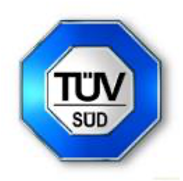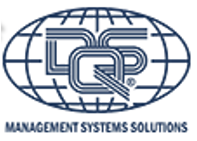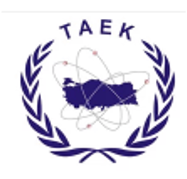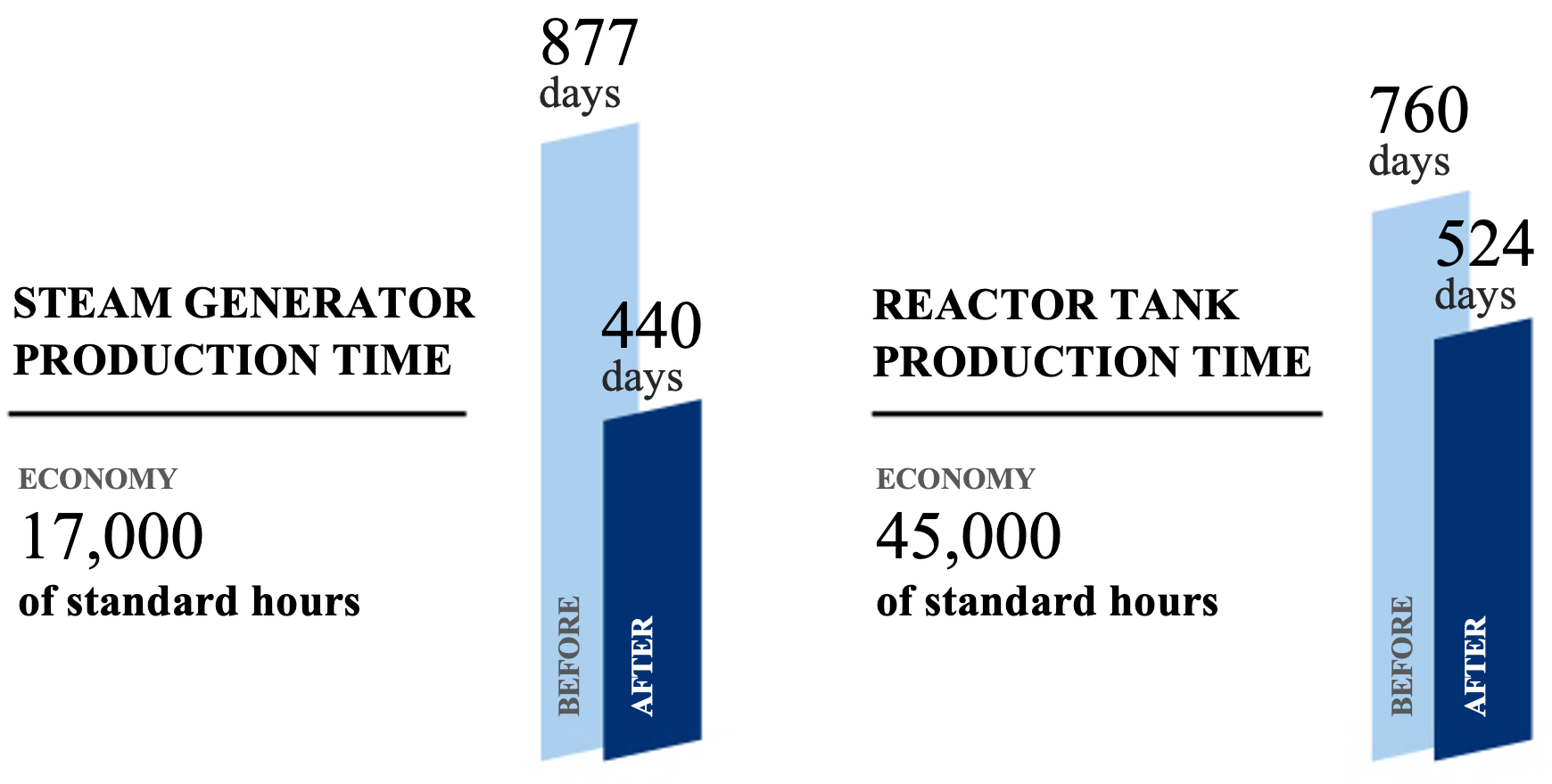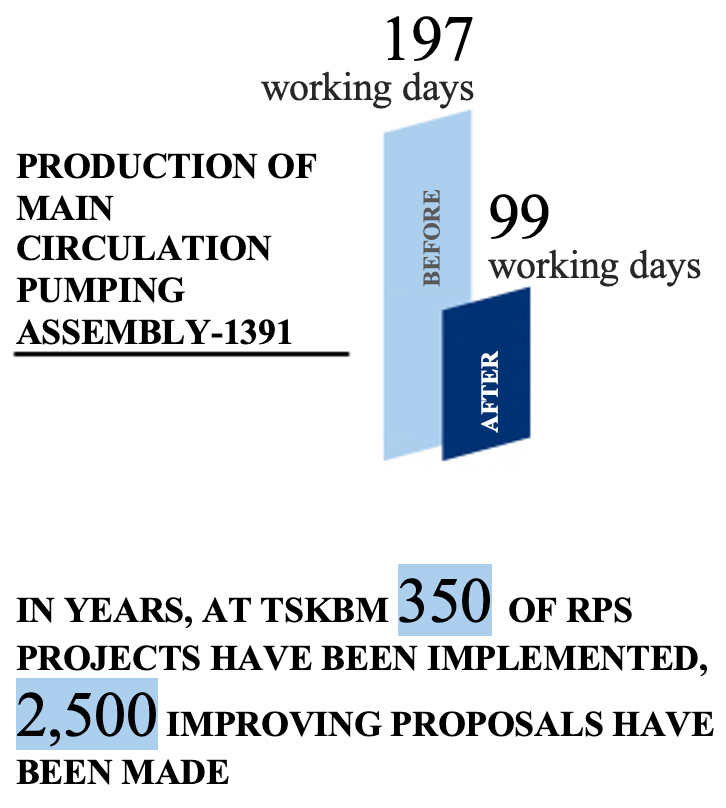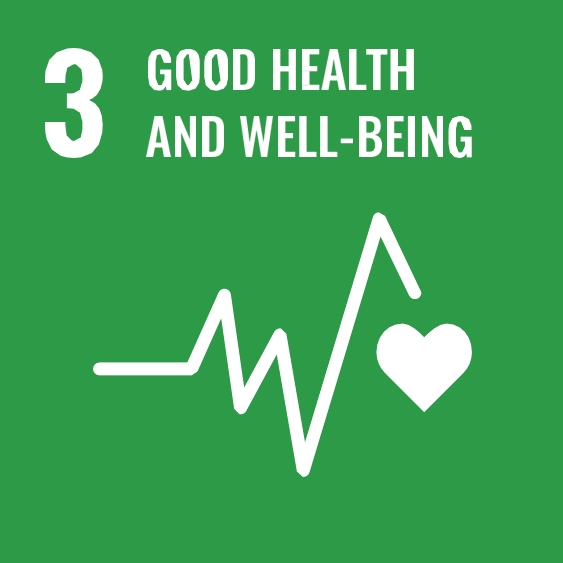 |
Preserving the life, health and performance of employees of the machine-building division in the course of their work, preventing incidents, accidents, industrial injuries and occupational diseases, improving the working conditions and labor protection of employees are priority tasks for Atomenergomash during all production activities. Each enterprise of AEM has a labor protection unit that monitors and regulates the implementation of labor protection regulations within the Company. Each employee is obliged to familiarize himself (herself) with the labor protection rules and actions in emergency situations: at AEM, instructions and training are provided for everyone. The legal basis for the functioning of the labor protection and industrial safety management system in the Division are: the Labor Code of the Russian Federation, the Federal Law on Industrial Safety of Hazardous Production Facilities, regulatory legal acts of the President of the Russian Federation, the Government of the Russian Federation and federal executive authorities, as well as local acts of State Atomic Energy Corporation Rosatom. As part of the performance of their duties, the employees of the Division are obliged to strictly comply with the rules of industrial safety and labor protection, organization and observance of which are ensured by the specialists of the labor protection and industrial safety services.
LTIFR (Lost Time Injury Frequency Rate) indicates the effective measures taken by the Division's management to reduce occupational injuries by improving the efficiency of labor protection. The Injury Frequency Rate is 0.07, which is 6 times lower than five years ago. The level of industrial safety at the facilities of the organizations included in the management loop of Atomenergomash complies with the requirements of the legislation of the Russian Federation - incidents, accidents at hazardous production facilities have not been registered since the establishment of the Machine-Building Division. The regular test of knowledge is carried out within the time frame established by local regulations.
|
|
|
In 2021 State Atomic Energy Corporation Rosatom joined the global VisionZero initiative, the goal of which is to achieve zero injuries by participating companies. Prevention of hazards is one of the basic principles of ensuring occupational safety and health, which is implemented, among other things, by eliminating or reducing the levels of occupational risks in accordance with the labor legislation of Russia. Following this principle, in 2021, AEM-Technologies (part of Atomenergomash) implemented a project for the precise location of production personnel. |
|
|
The system for the precise location of personnel and hazardous industrial facilities with the ability to signal the presence of people in a hazardous area is a set of measures that allows you to analyze the movement trajectories of employees to determine unproductive and potentially dangerous actions in production. RTLS is a real-time locating system for people and objects. The main functions of the system are:
The enterprise has installed and put into operation server software, mounted positioning antennas (anchors), master anchors, and a wireless charging station. Integration of RTLS with the ACMS system (access control and management system), the control system for roller stands. Tags are issued to the staff, and, during the entire work process, they are with the employee. |
|
|
QUALITY MANAGEMENTOne of the core values of AEM is operational safety. The safety of nuclear facilities is directly related to the quality of the products manufactured by the Company. Increasing safety requirements for nuclear facilities under construction and in operation impose special obligations on all enterprises of the Division in terms of product quality, and safety assessment is becoming an integral part of the production of all types of products. The enterprises of the Division have developed and certified quality management systems (QMS) in accordance with the requirements of ISO 9001. Also AEM is being certified, the quality of production is confirmed by international associations and regulators.
ROSATOM PRODUCTION SYSTEM
The basic principles of the RPS upon which the employees of AEM rely in their work are:
For the period from 2016 to 2020, the employees of the leading enterprises of the RPS (OKBM Afrikantov, ZiO-Podolsk, CDBMB, OKB GIDROPRESS, AEM-Technologies) had been trained in basic RPS courses:
AEM also involves contracting organizations in the RPS and teaches the culture of lean production, a system of continuous improvement of processes.
ATOMMASHSpeaking about RPS projects with the most striking economic effect, the first thing they remember is the rationalization of production at Atommash. In 2020, the company set a production record: within a year, it managed to ship three reactors and 18 steam generators for three nuclear power plants around the world (Russia, Turkey and Bangladesh). For the fifth time in a row, Atommash received the status of the "RPS Leader". It was not possible to achieve results immediately: technical re-equipment took place gradually, Atommash specialists analyzed in detail dozens of separate production processes, for each of which a separate program was developed. One of the achievements – reduction of equipment manufacturing time:
PETROZAVODSKMASHPetrozavodskmash began to use individual elements of the RPS in 2010, and the system deployment started in 2017. One of the achievements – the time for the manufacture of the main circulation pump housings was more than halved (from 896 to 380 days), the main circulation pipeline – from 540 to 404 days, the duration of the incoming inspection of materials was reduced from 200 to 30 days.
CDBMBCDBMB has moved to a new level – the development of exemplary RPS-sites, that is, those where tools and methods of lean production are introduced for the subsequent dissemination of successful experience. In 2019, the RPS-sample "Blank Production" was created – the basis of the entire production cycle. A system for optimal loading of thermal ovens (container kanban) was developed and a pulling-replenishing system for a semi-finished product was organized, which made it possible to reduce the time of the process of manufacturing a blank from 17 to three days.
ZiO-PodolskThe manufacturing sides began to implement RPS tools in 2009. In 2017–2018, a project was implemented to increase the production capacity of cases from 100 to 200%, the production time was reduced from 48 to 23 days. Today this is the most successful RPS project of ZiO-Podolsk, which is confirmed by regular visits of specialists from other industry enterprises for training and learning from experience.
|



